“Sustainable” — it’s the new catchword and the new black. It’s a word I’m trying to reiterate over and over again with my family, and now that I’m leading a big habitat project at our elementary school, it’s a term I’m making sure our students know, as well.
Doves, mind you, don’t seem to understand the word “sustainable” nor the word “reduce,” the little wasteful gluttons. But on occasion, they do lend themselves out for a nice winter picture, so for the moment I’ll forgive them.
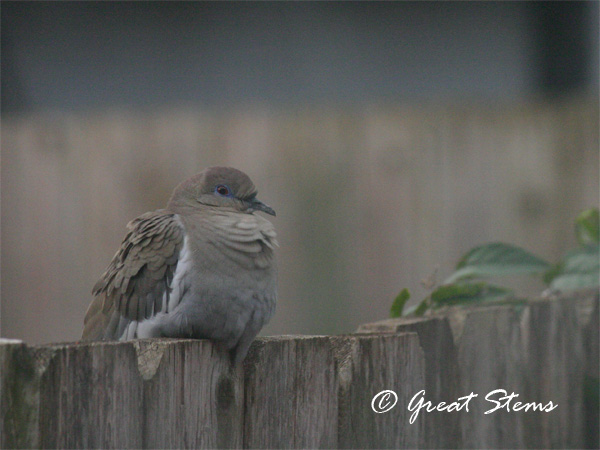 It warms my heart to see how many bloggers are spreading the word about environmental care by encouraging fellow bloggers to think, act, and make lifestyle changes in regard to taking care of Earth. Suzy at HipMountainMama is leading One Small Change, Dee at RedDirt Ramblings recently hosted a reel mower giveaway, and Jan at Thanks for Today has established the Garden Bloggers Sustainable Living Project.
It warms my heart to see how many bloggers are spreading the word about environmental care by encouraging fellow bloggers to think, act, and make lifestyle changes in regard to taking care of Earth. Suzy at HipMountainMama is leading One Small Change, Dee at RedDirt Ramblings recently hosted a reel mower giveaway, and Jan at Thanks for Today has established the Garden Bloggers Sustainable Living Project.
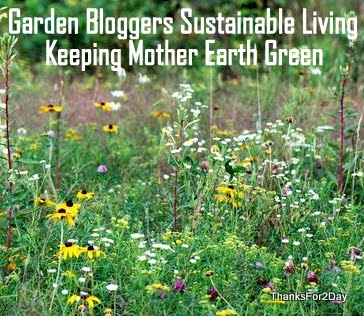 This post is multi-purpose. One, I need to report on my One Small Change progress for January and February. Two, I want to partake in Jan’s Sustainable Living Project, and three, I want to share all these bird photos I just got this morning! I’ve been trying to find woodpeckers in the trees for months, and I was shocked to finally see one — at our birdfeeder!
This post is multi-purpose. One, I need to report on my One Small Change progress for January and February. Two, I want to partake in Jan’s Sustainable Living Project, and three, I want to share all these bird photos I just got this morning! I’ve been trying to find woodpeckers in the trees for months, and I was shocked to finally see one — at our birdfeeder!
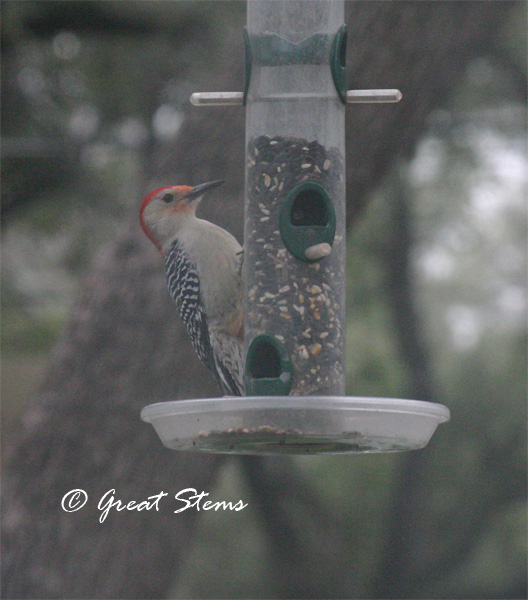 Taking all these shots, I was reminded that our kitchen window could really stand a good vinegar wash.
Taking all these shots, I was reminded that our kitchen window could really stand a good vinegar wash.
In my own garden, as many know, I’m dedicated to planting as many drought-hardy Texas native plants with organic methods as I can. My plants are like my children — I want to nurture them when they are young, help them grow up big and strong, and guide them to being able to make it on their own. Someday, we might move away from this house, and if my plants aren’t able to survive without care, they might not make it. I also long to be lazy — the better my plants can establish, the less I’ll have to do… one day.
My biggest project at the moment is guiding our elementary school to become a Certified Schoolyard Habitat. We’re putting in a new butterfly-hummingbird garden as Phase 1, and the list of Phase 2 environmental projects is growing — we’ll be putting a water collection system and more. Co-existing with this habitat project is another project for the 3rd- and 4th-graders — learning about wildlife habitats and then teaching the community about them through 3-D murals. The excitement over habitats is spreading fast, and I feel so good helping our students become environmental stewards.
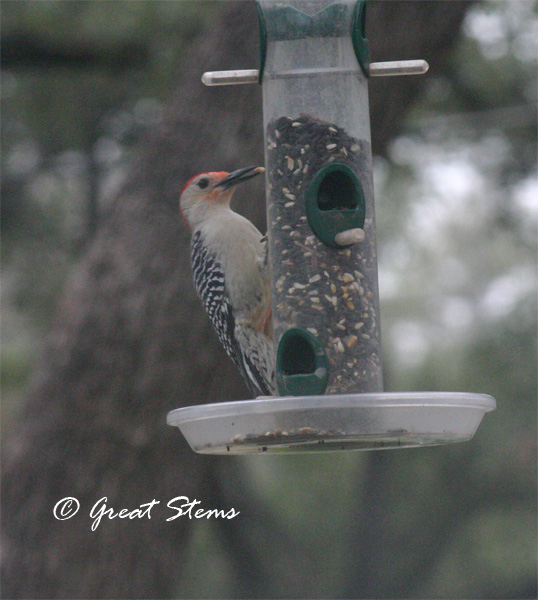 On my sidebar, I call myself green-blooded. While my blood might *look* red, especially when I cut myself on a thorny spine or do some other clumsy thing in the garden, my heart and soul are always thinking about ways to protect the environment, and so my blood really runs green. If you put on your special Super-Enviro-Power goggles, you’ll be able to see it. If you don’t have any, then I’ll just raise my hand in a Vulcan greeting.
On my sidebar, I call myself green-blooded. While my blood might *look* red, especially when I cut myself on a thorny spine or do some other clumsy thing in the garden, my heart and soul are always thinking about ways to protect the environment, and so my blood really runs green. If you put on your special Super-Enviro-Power goggles, you’ll be able to see it. If you don’t have any, then I’ll just raise my hand in a Vulcan greeting.
In January, for One Small Change, I did three primary acts for the environment: I removed all remaining nandinas from my property, sending the bushes to city mulch and throwing away the berries. I also took all our old leftover chemical products, bleach, and paint from our past to the Austin Hazardous Waste Facility, and some from two of our neighbors. We’ve been using natural cleansers for a long while now, and finally the evidence from our former lifestyle is gone, gone, gone. And finally, I’ve been learning many different organic products to help gardeners stay green. I feel more knowledgable about offering green solutions to problems in the yard. Understanding the soil food web was a big part of this. It all begins in the earth, and truly everyday is Earth Day in my book. (Officially, Earth Day is celebrated on April 22).
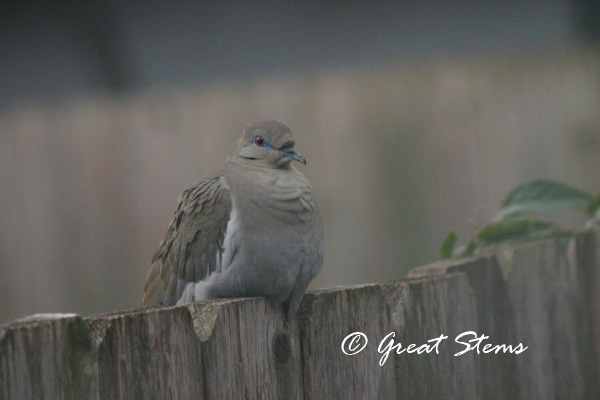
This month, my son asked us to make something for the wildlife for our February change. We are going to make a bee box or two and a screech owl house. Looking ahead to March, I think I want to train my family to open blinds daily to let the light shine in, and I want to strategically place mirrors to help get more natural light across our house without having to turn on artificial lights. There’s a tendency in this family to become inert in regard to opening/closing the blinds, and the result is way more “turning on the lights” than should be necessary. Right now my study blinds are open, and the cats are on my desk watching the birds outside, and the puppy is occasionally growling and barking at the hanging plant hovering outside. No, pup, it’s not an evil threat, but it would look nicer if the plant in it hadn’t died this winter.
I feel so hopeful this year that Earth is finally getting the kind of attention it so needs and deserves.
Take care of yourselves and our wonderful Earth this spring, and always. And live long and prosper.
Hugs,
Meredith
A brilliant posting and the need for people to take care of their environment is SO important too – in France you can buy so many weedkillers and pesticides and people don’t seem to take the care they do elsewhere – luckily things are changing but a lot if it is ignorance… so keep up the good work! Love the pics of your Woodpecker – different to the ones we have here – Miranda
I find it so depressing to be in a dark house, where the daylight is shut out. We shade out the glare of the sun, but as soon as it has moved enough I will open those blinds. Let the light shine in. Electric is not balm for the spirit as true daylight is!
You know, blood is only one atom removed from chlorophyl, and in WWII that actually had to use chlorophyl due to blood shortages for transfusions. And it worked to buy the patient enough time. And love what your doing at the elementary school!
Meredith, this is a wonderful post;-) I want to go put it on my site and I’ll be back with another comment. Thanks so much for writing it!
Hi again, Meredith! I have to admit, it had been a while since I’d been for a visit, so it wasn’t until now that I read your section on the changes you made in the past year. You have definitely come a long way and made so many improvements for the better and for nature to thrive around you. It is so impressive and refreshing to read your account of the whole process!
And your post is terrific! The things you do with your children are priceless and will have a huge effect (positive) on their outlook and perspective. Planting natives, removing invasives, developing a schoolyard garden, and cleaning using natural products are such positive contributions and yes, your blood most definitely runs green;-)
I enjoyed the section on your blog, outlining your cleaning products and giving directions for using them. I can really put that information to good use!
It was a pleasure to stop by again and I look forward to catching up some more. I’m so glad you were able to contribute to this garden blogging project!
Wonderful! So happy you are teaching future earth lovers! Saw that same woodpecker at my house this am too. He may have been eating the house, though! Showed your blog to a friend today who is a green living native planter who just built a environmentally conscious home. She is so impressed and wondered if you know of any E. Tennessee garden bloggers.
It just so happens that some of my favorite garden bloggers are in Tennessee, Heather. You both should visit: Clay and Limestone (http://clayandlimestone.blogspot.com/) and Fairegarden (http://fairegarden.wordpress.com/). I know there are other good TN bloggers, as well, but I bet if you start with these two, they’ll soon have you familiar with the rest. Or send them a message — I bet they’ll be glad to help.
Congratulations, Meredith…you’re a winner!
http://thanksfor2day.blogspot.com/2010/04/my-earth-day-contribution-and.html